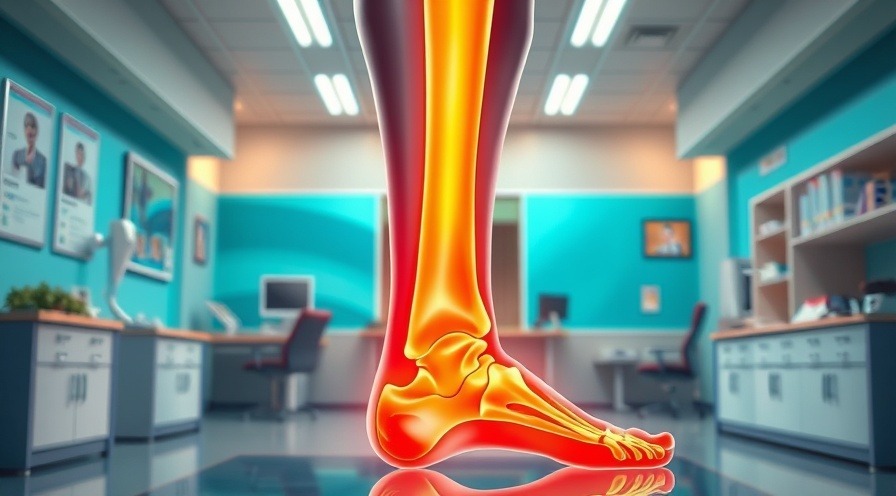
Understanding the Surge of Achilles Injuries in Pickleball
Recently, there's been growing concern about an alarming trend among pickleball players: a striking increase in Achilles tendon ruptures. This issue has many players, particularly those over 40, wondering what they can do to enjoy this popular sport while avoiding serious injury. In this article, we explore the Achilles tendon, the mechanics of potential injuries, and advice from healthcare professionals on how to safeguard your health as you hit the courts.
In 'Pickleball Achilles Tendon Ruptures - Epidemic?', the discussion highlights the alarming rise of injuries related to this popular sport, prompting a deeper analysis of preventive measures.
The Achilles Tendon: What Is It and Why Does It Matter?
The Achilles tendon connects the calf muscles to the heel bone and plays a critical role in movements such as running, jumping, and walking. This powerhouse tendon can endure forces of over seven times our body weight, making it essential for mobility. However, as we age, the strength and resilience of our tendons can weaken, increasing the risk of injury—especially during high-intensity activities. The misguided belief that one can jump back into competitive sports without preparation is leading to an epidemic of injuries among weekend warriors.
Pickleball's Popularity and the Growing Risk of Injury
With its rapid rise in popularity, pickleball has attracted a wide range of players, many of whom may not have engaged in competitive sports for years. This influx includes a significant number of older adults who want to stay active and socialize, but they often dive headfirst into the game without adequate preparation. The sudden lateral movements, abrupt changes in direction, and explosive starts common in pickleball can put significant strain on the Achilles tendon, leading to injuries that could sideline players for months.
Preventing Injuries: Advice from Doctors
To combat the rising instances of Achilles injuries in pickleball, experts recommend several preventive strategies. First and foremost, consider starting a training regimen a few weeks in advance of your first game. This includes strengthening and stretching exercises specifically designed for the Achilles tendon. Simple calf raises and eccentric exercises, performed a few times a week, can build resilience. Additionally, proper warm-ups and cooldowns are essential. Stretching both the gastrocnemius and the soleus muscles is crucial to prepare the tendon for the stresses of play.
Equipment Matters: Choose the Right Shoes
One often-overlooked aspect of pickleball safety is appropriate footwear. Wearing shoes designed for lateral support can make a considerable difference in reducing injury risk. Opt for shoes specifically meant for court sports rather than casual footwear like flip-flops. Make sure the courts you play on are in good condition; avoid playing on uneven surfaces that may increase the risk of accidents.
Listen to Your Body: Signs to Watch For
If you’re experiencing persistent pain or discomfort in your Achilles tendon, it’s essential to pay attention to these warning signs. Continuing to push through the pain can exacerbate an injury, leading to more severe issues down the line. If you're injured or feeling off, consider consulting a specialist to discuss your symptoms before jumping back into the game.
As the popularity of pickleball continues to grow, so should our awareness of its physical demands. By understanding the anatomy of our bodies and taking steps to fortify our fitness before jumping into play, we can enjoy the benefits of this exhilarating sport without jeopardizing our well-being.
Take Control of Your Health
If you're a pickleball enthusiast, prioritizing proper training, stretching, and equipment can dramatically enhance your experience and reduce the risk of injuries. Remember, you’re in charge of your own health. So before you grab that paddle and hit the court, take the time needed to prepare your body. (Stretches) Stay safe and have fun playing this fantastic sport!
 Add Row
Add Row  Add
Add 




 Add Row
Add Row  Add
Add 

Write A Comment